It looks like you're using an Ad Blocker.
Please white-list or disable AboveTopSecret.com in your ad-blocking tool.
Thank you.
Some features of ATS will be disabled while you continue to use an ad-blocker.
share:

Dr. Sanjay Gupta changes mind on weed
TV doc Sanjay Gupta says the public has been misled about marijuana.
The haze surrounding Sanjay Gupta's stance on medical marijuana use has cleared.
The TV doctor says he just wasn't looking hard enough.
CNN's chief medical correspondent announced his change in heart Aug. 8 in an online op-ed, Why I Changed My Mind on Weed, promoting his special Weed, a documentary premiering tonight at 8 p.m. on CNN.
Gupta says he used to oppose the use of medical marijuana. But after more research, he says he has changed his mind, and has apologized for earlier statements, including his 2009 TIME magazine article Why I Would Vote No on Pot.
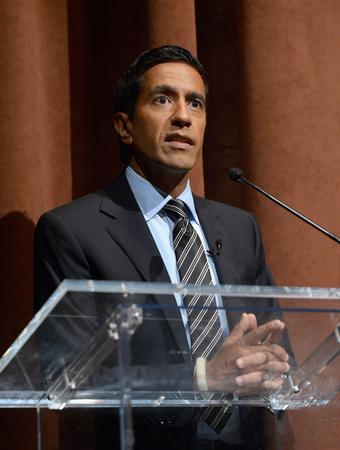
Sanjay Gupta attends the Weed: Dr. Sanjay Gupta Reports' screening on Aug. 6 in New York. (Photo: Larry Busacca, Getty Images for Time Warner)
I have apologized for some of the earlier reporting because I think, you know, we've been terribly and systematically misled in this country for some time,"
Gupta told Piers Morgan on CNN. "And I did part of that misleading."
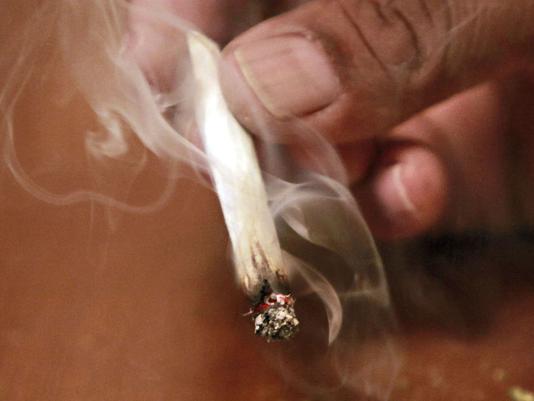
A man displays marijuana on Nov. 4, 2010, in Tempe, Ariz. (Photo: Matt York, AP)
Mason Tvert, the director of communication for the Marijuana Policy Project, a national group promoting the legal use of medical and non-medical marijuana, says the situation illustrates the establishment's misinformation and scare tactics for the past 70 years.
"Most Americans are recognizing that marijuana is not as harmful as they were led to believe," he says.
"There's so much evidence out now that any person looking at it objectively would have to call our current marijuana policies into question."
The often-cited health risks associated with marijuana, he says, are not as malignant as previously conceived. And, like Gupta, he points out that alcohol and nicotine are just as unhealthy and cause a larger number of deaths compared to cannabis.
But Nora Volkow, director of the National Institute on Drug Abuse says the issue isn't whether marijuana is less harmful than alcohol or nicotine, it's whether society is willing to deal with the harm legalizing another drug could cause.
"If you look at the data … the costs associated with drugs in our country, which are gigantic, are driven mostly by legal drugs because they're so accessible. (The legalization of marijuana) will immediately increase the adverse affects."
Though some compounds in marijuana may be beneficial, she says it's difficult to determine if they can be extracted for treatment, to avoid the drug's harmful effects.
Also, she says, marijuana poses an even more unique challenge, because each plant and its chemical levels, including THC, vary.
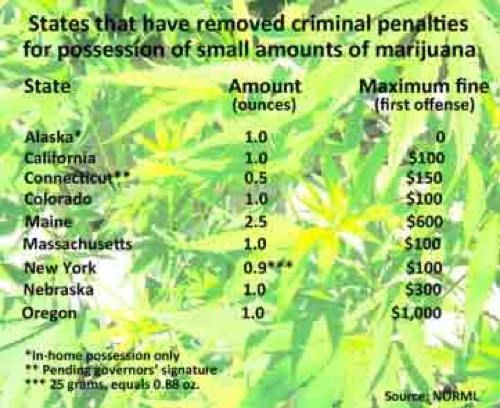
Volkow says marijuana is very harmful to the developing brains of adolescents, who may have more access to the drug if legalized, and may interpret it as less harmful or dangerous because doctors condone its use. She notes that prescription medications, while legal, are the leading cause of drug-related deaths for adolescents.
Gupta's proclamation, and the growing movement to legalize marijuana and medical marijuana, "definitely make the work we do more difficult," says Jamison Monroe, founder and CEO of Newport Academy in California, a drug treatment program for adolescents.
"I don't think you could say just because one drug is legal something else should be legal. If it does become legalized though, there should at least be an age limit."
Volkow also questions the use of the term "medical marijuana," because the medicinal use of the drug or its chemical contents has yet to be assessed or approved by the Food and Drug Administration, which is required for all medicines used in the USA.
Though Gupta's comments may be well-meant, she says, he may be jumping the gun.
"I wish I could stand up and say to people 'Yes, this will help.'
I want to help, but it would be irresponsible on my part," Volkow says.
"The evidence is not there and if we look at what has happened in the past with coc aine and even methamphetamine, doctors also believed these drugs would be beneficial, until they realized the (negative) effects."


It is about time!!
Now on to the serious business of freeing all of the wrongly charged non-violent prisoners who deserve compensation from the corrupt system that has done them so wrong!!
While we are at it how about we begin having discussions about changing the entire idea of a drug war, upon further thought how about we just take all funding for this pseudo-war and put it into strengthening communities hit hardest by it?!?
Now on to the serious business of freeing all of the wrongly charged non-violent prisoners who deserve compensation from the corrupt system that has done them so wrong!!
While we are at it how about we begin having discussions about changing the entire idea of a drug war, upon further thought how about we just take all funding for this pseudo-war and put it into strengthening communities hit hardest by it?!?
edit on America/ChicagoFridayAmerica/Chicago03America/Chicago331pmFriday5 by elementalgrove because: (no reason given)
This is old news presented as new in a very good OP presentation (except for the old bits), but still nice to read.
edit on 13-3-2015 by
Aleister because: (no reason given)
It always seems to come back to "corruption of our youth". I would think there's been plenty of time to find a better excuse. If we teach our
children to think for themselves, they wouldn't be so easily corrupted!
WEED - A CNN Special Report by Dr. Sanjay Gupta (Full HD 1080p - 2013 Documentary) - YouTube
Published on Aug 21, 2013
Here are CNN's Special Reports by Dr. Sanjay Gupta showing the clear proven medical benefits of high CBD marijuana and why marijuana should not be classified as a Schedule 1 Controlled Substance by the U.S. Federal Government.
Here is Sanjay Gupta's newest high tech animation on THC and CBD in the brain, along with an interview with Congressman Scott Perry of Pennsylvania discussing his new landmark bill that would legalize low-THC high-CBD medical marijuana at the Federal level:
www.youtube.com...
See this pending federal legislation in the United States of America, "H.R.5226 - Charlotte's Web Medical Hemp Act of 2014."
beta.congress.gov...…
Marijuana should be immediately rescheduled to Schedule 3. Marijuana is less harmful than heroin, coc aine and crystal meth, with accepted medical uses in the United States, moderate potential for physical dependency in some populations and high potential for psychological dependency in some populations.
Given the need for establishing a consensus with social conservatives, Schedule 3 is the most conservative scheduling that is honest and truthful for now, although we may choose to revisit this issue again at a later date after the science is in and we know more about the issues of dependency in specific vulnerable populations from a large scale scientific perspective. We need to do this now on a bipartisan basis. It's about openness and transparency in government. We need to be told the truth and not be lied to by our government.
Schedule 1 is official state propaganda hard coded into the law of the land. It's insane. It is a glaring example of official abuse of power, given what we know today.
Both Congress and the executive branch (e.g., U.S. Attorney General) have the authority to reschedule marijuana. It can be an Act of Congress or an act of an official in the executive branch. Drug scheduling is a multiple choice with five options.
The question is, "Which schedule most correctly and accurately and truthfully describes marijuana according to all available scientific evidence and medical research?" Some answers are more correct and truthful than others, as can be attested to by scientists, academics, doctors, nurses and other health care professionals. Schedule 1 is the wrong answer, based on the evidence presented in the three CNN videos above.
Since it has a variety of scientifically proven medical uses and it has been proven to be safe under medical supervision, Schedule 1 is patently untruthful with respect to marijuana and there is a growing political consensus on that point.
Keep in mind that heroin is a Schedule 1 drug and coc aine and crystal meth are Schedule 2 drugs. Marijuana is less addictive and dangerous than all three of these drugs and it currently has accepted medical uses in the United States.
So what's the best answer? Schedule 3, of course, at the very least.
Marijuana is medicine. Case closed.
(1) Schedule I. (A) The drug or other substance has a high potential for abuse. (B) The drug or other substance has no currently accepted medical use in treatment in the United States. (C) There is a lack of accepted safety for use of the drug or other substance under medical supervision.
(2) Schedule II. (A) The drug or other substance has a high potential for abuse. (B) The drug or other substance has a currently accepted medical use in treatment in the United States or a currently accepted medical use with severe restrictions. (C) Abuse of the drug or other substances may lead to severe psychological or physical dependence. *
(3) Schedule III. (A) The drug or other substance has a potential for abuse less than the drugs or other substances in schedules I and II. (B) The drug or other substance has a currently accepted medical use in treatment in the United States. (C) Abuse of the drug or other substance may lead to moderate or low physical dependence or high psychological dependence.
(4) Schedule IV. (A) The drug or other substance has a low potential for abuse relative to the drugs or other substances in schedule III (B) The drug or other substance has a currently accepted medical use in treatment in the United States. (C) Abuse of the drug or other substance may lead to limited physical dependence or psychological dependence relative to the drugs or other substances in schedule III.
(5) Schedule V. (A) The drug or other substance has a low potential for abuse relative to the drugs or other substances in schedule IV. (B) The drug or other substance has a currently accepted medical use in treatment in the United States. (C) Abuse of the drug or other substance may lead to limited physical dependence or psychological dependence relative to the drugs or other substances in schedule IV.
WEED 2 - Cannabis Madness - Dr. Sanjay Gupta Reports (Full HD 1080p - 2014 CNN Documentary) - YouTube
Published on Mar 14, 2014
Here are CNN's Special Reports by Dr. Sanjay Gupta showing the clear proven medical benefits of high CBD marijuana and why marijuana should not be classified as a Schedule 1 Controlled Substance by the U.S. Federal Government.
Here is Sanjay Gupta's newest high tech animation on THC and CBD in the brain, along with an interview with Congressman Scott Perry of Pennsylvania discussing his new landmark bill that would legalize low-THC high-CBD medical marijuana at the Federal level:
www.youtube.com...
CNN's Dr. Sanjay Gupta - Marijuana and the Brain Animation and Landmark Federal Marijuana Bill - YouTube
See this pending federal legislation in the United States of America, "H.R.5226 - Charlotte's Web Medical Hemp Act of 2014." beta.congress.gov...
a reply to: thorfourwinds
The masses have been lied to by gigantic powerful corporate interests,in league with the governments?
Say it ain't so...Who would believe such an idea?
The masses have been lied to by gigantic powerful corporate interests,in league with the governments?
Say it ain't so...Who would believe such an idea?
Marijuana legalization leads to fewer suicides
February 11, 2014
by: L.J. Devon
[…]
Where psychotropic medications cause suicide, marijuana can help reduce those rates.
Reducing suicide rates by 10.8 percent in young males
The researchers compared data from the 12 states that had legalized medical marijuana with the other 38 states which still criminalized the plant.
After adjusting the data based on state policies, economic conditions and state-specific linear time trends, the researchers found a distinct correlation between marijuana legalization and suicide rates. While the results for females were inconclusive, legalization of medical marijuana showed a 10.8 percent reduction in suicide rates for men aged 20 through 29 and a 9.4 percent reduction in men aged 30 to 39.
The newly published report is contained in the American Journal of Public Health.
"The negative relationship between legalization and suicides among young men is consistent with the hypothesis that marijuana can be used to cope with stressful life events," the authors wrote. "However, this relationship may be explained by alcohol consumption. The mechanism through which legalizing medical marijuana reduces suicides among young men remains a topic for future study," say the authors of the study.
"The estimates for females were less precise and sensitive to model specification," Rees said. "In other words, legalization may reduce suicides among females, but we didn't find conclusive evidence one way or the other.
Females could respond to marijuana differently than males. Females could respond to alcohol differently than males. It's even possible that they respond to legalization differently than males."
February 11, 2014
by: L.J. Devon
[…]
Where psychotropic medications cause suicide, marijuana can help reduce those rates.
This is good news for those who struggle to cope using psychotropic prescription medications. While trying to manage anxiety and depression, many of these pharmaceutical drugs actually lead users to dependency and even suicide, as listed as one of many harmful side effects of these drugs.
The roles are being reversed as the majority now realizes that marijuana isn't the the gateway drug or the big bad wolf that it had been made out to be. Many now see that psychotropics are the real drugs that should be eradicated, as they are responsible for causing violent and suicidal behavior.
Economists Dr. Mark Anderson, PhD; Daniel I. Rees, PhD; and Joseph J. Sabia, PhD, worked together to obtain state-level suicide data from the National Vital Statistics System's Mortality Detail Files between 1990 and 2007. Applying regression analysis, the team examined associations between a state's medical marijuana legalization status and suicides per 100,000 people.
Reducing suicide rates by 10.8 percent in young males
The researchers compared data from the 12 states that had legalized medical marijuana with the other 38 states which still criminalized the plant.
After adjusting the data based on state policies, economic conditions and state-specific linear time trends, the researchers found a distinct correlation between marijuana legalization and suicide rates. While the results for females were inconclusive, legalization of medical marijuana showed a 10.8 percent reduction in suicide rates for men aged 20 through 29 and a 9.4 percent reduction in men aged 30 to 39.
The newly published report is contained in the American Journal of Public Health.
"The negative relationship between legalization and suicides among young men is consistent with the hypothesis that marijuana can be used to cope with stressful life events," the authors wrote. "However, this relationship may be explained by alcohol consumption. The mechanism through which legalizing medical marijuana reduces suicides among young men remains a topic for future study," say the authors of the study.
"The estimates for females were less precise and sensitive to model specification," Rees said. "In other words, legalization may reduce suicides among females, but we didn't find conclusive evidence one way or the other.
Females could respond to marijuana differently than males. Females could respond to alcohol differently than males. It's even possible that they respond to legalization differently than males."
You mean to tell me that previous documentaries were inaccurate?
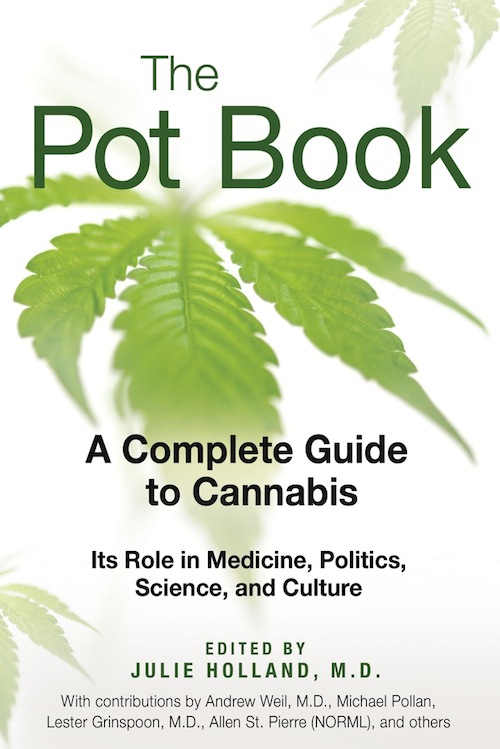
The Pot Book: A Complete Guide to Cannabis
EDITED BY JULIE HOLLAND M.D.
The Pot Book contains the work of over fifty contributors, primarily MDs and PhDs, each writing (or being interviewed) about their areas of expertise. After three years of putting this book together, I'm convinced that cannabis can be re-introduced to physicians and patients as the multifaceted medicine it once was. I think we will see in the next decade or so an explosion of research into the therapeutic use of cannabinoids as medications.
Exploring the role of cannabis in medicine, politics, history, and society, The Pot Book offers a compendium of the most up-to-date information and scientific research on marijuana from leading experts. The Pot Book also examines the risks associated with cannabis use, and puts them in the context of potential benefits.
Julie Holland, MD discusses The Pot Book - YouTube
TABLE OF CONTENTS
"Before pot was illegal, it was a medicine used for thousands of years to treat everything from muscle spasms to insomnia.
Cannabis has powerful anti-inflammatory activity, it can act as a free-radical scavenger, and most importantly, cannabis has anti-cancer properties.
Cannabinoids can kill cancer cells by apoptosis (triggering programmed cell death) while sparing healthy cells, and can also prevent tumor blood supplies from forming, which is called angiogenesis.
Cannabinoids also have a pro-metabolic effect, meaning they may be helpful in stopping the progression of diabetes (partially through its anti-inflammatory action on the cells of the pancreas), as well as helping to normalize blood sugar and cholesterol levels.
Cannabis is a medicine that can slow the prevention of atherosclerosis (hardening of the arteries, the cause of many heart attacks and strokes) and can modify autoimmune diseases including arthritis, Crohn’s disease, and Multiple Sclerosis. (Cannabis doesn’t just relax the spasming muscles and bladders of MS patients; it actually seems to modify the course of illness and may slow neurodegeneration through its neuroprotective effect.)
The United States has taken out a patent on the use of Cannabis as a neuro-protectant, though they continue to keep the plant in Schedule I, reserved for drugs with the highest potential for abuse and no medicinal use. Groups of physicians and nurses including the American Medical Association have requested a review of this scheduling.
There are other important uses of this plant.
Cannabis seeds are a complete vegetarian protein and can be used as food for people, livestock, and birds. Hempseed oil not only provides the exact ratio of essential fatty acids our bodies need, but it can also be used as a fuel.
Hempseed oil is a renewable fuel source, which could decrease our reliance on foreign oil.
Hemp (the non-psychoactive stalk of the cannabis plant) can make many consumer goods including paper (decreasing deforestation that complicates our climate maintenance) rope, canvas, and clothing more absorbent than cotton. Importantly, with compostable cellulose, hemp can replace our current plastic bag and Styrofoam “plastic vortex”/landfill crisis.
Cannabis was made illegal in 1937, soon after alcohol prohibition was repealed.
We are currently imprisoning more people
than any other country on the planet,
with nearly half of our prisoners serving time for drug offenses.
New York City, where I practice medicine, arrests more people for marijuana offenses than any other city in the US. Although Caucasians constitute the majority of pot smokers, African-Americans and Latinos experience a disproportionate number of marijuana-related arrests.
Renewable bio-fuel, food, clothing, paper, and medicine--and America can't have any of it. Because it makes us laugh. As a psychiatrist,
I have to tell you: This is insanity.
The Pot Book is a not-for-profit project, with all proceeds from book sales funding research into the therapeutic uses of cannabis and cannabinoid-based medicines."
edit on 13/3/2015 by thorfourwinds because: ttyyppooss
Thank you for the participation.
A History of Medical Cannabis Research and the Endocannabinoid System
Published on Aug 8, 2013
A History of Medical Cannabis Research and the Endocannabinoid System
Published on Aug 8, 2013
Deepening the Understanding of Cannabis as a Medicine
Published on Jan 15, 2015
In this panel speakers will discuss new exciting projects and initiatives that are deepening our understanding of cannabis as medicine.
Panelists: Dr. Jahan Marcu, Ph.D.
Dr. Stephen Corn, M.D.
Dr. Rick Doblin, Ph.D.
Dr. Dominic Corva, Ph.D.
Marking this thread for reading later.
Have to applaud someone who admits they were wrong about something so important.
The momentum is growing.
Actually I never thought I'd see such progress in my lifetime.
Sick of being labelled a criminal and risking my liberty because I prefer to sit in my own house and watch a movie with some weed rather than get drunk and join the alcoholic chaos on our streets every weekend.
Enough lies and bullshirt because of vested interests.
Have to applaud someone who admits they were wrong about something so important.
The momentum is growing.
Actually I never thought I'd see such progress in my lifetime.
Sick of being labelled a criminal and risking my liberty because I prefer to sit in my own house and watch a movie with some weed rather than get drunk and join the alcoholic chaos on our streets every weekend.
Enough lies and bullshirt because of vested interests.
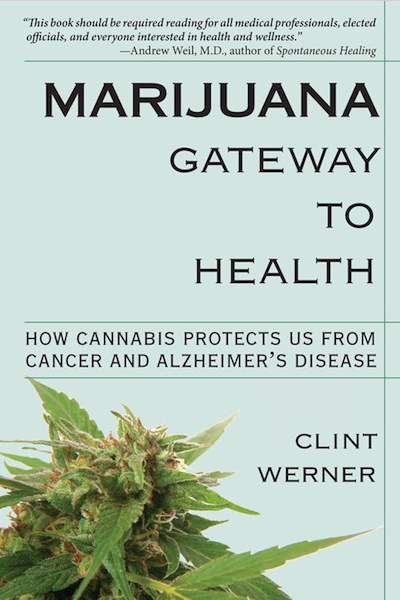
Marijuana Gateway to Health: How Cannabis Protects Us from Cancer and Alzheimer's Disease
Reviewed By Mary Pat Jacobs of the Sonoma Alliance for Medical Marijuana
Once started, reading Marijuana Gateway to Health is hard to stop.

Clint Werner’s training in journalism is evident throughout, making his book a definite smile to read. It may seem difficult to find humor in the egregious assaults against this benign and beneficial substance, but Werner has done it. Readers will laugh often at the factoids he places in ironic juxtaposition to the ridiculousness of the drug warriors’ actions.
One need read only a page or three of this book to be well armed with information. Author of many books on wellness, Andrew Weil, M.D., wrote,
“This book should be required reading
for all medical professionals, elected officials
and everyone interested in health and wellness.”
The ‘End Notes’ are invaluable, as Werner’s association with Dr. Donald Abrams gave him access to world class researchers, medical professionals and long-time activists. It is also obvious that he went much further on his own to dig out the history and truths in the book.
Werner begins by explaining how the endocannabinoid system was discovered and how it interacts with receptors throughout the body, then describes exciting evidence that cannabinoids, especially THC and CBD, counteract a variety of diseases in ways that conventional drugs have not.
Study cascades into study proving that marijuana can actually impede and even stop cancer-cell growth. It augments the protection of brain cells from Alzheimer’s, stroke, traumatic injury, the effects of MS, Parkinson’s and other cerebral disorders, and actually stimulates the formation of functional new brain cells.
He recounts how these findings were discovered in spite of obstinate federal obstruction — from NIDA, the DEA and policymakers. The book reads much like an adventure mystery, complete with heroes and villains.
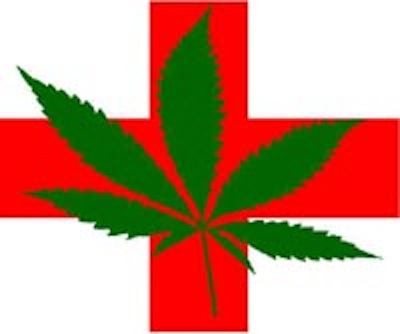
Werner ends on the upbeat, chronicling “The Marijuana Renaissance” as attitudes change incrementally throughout society and government. It is more like a glacier than an avalanche to be sure, but moving in a positive direction.
“Should you use marijuana?
If you’re an adult,
and you want to be healthier,
the answer is probably yes,”
concludes the author.
He makes it hard to disagree.



Hash Marihuana & Hemp Museum
This seems to help with the pain and also our glaucoma.
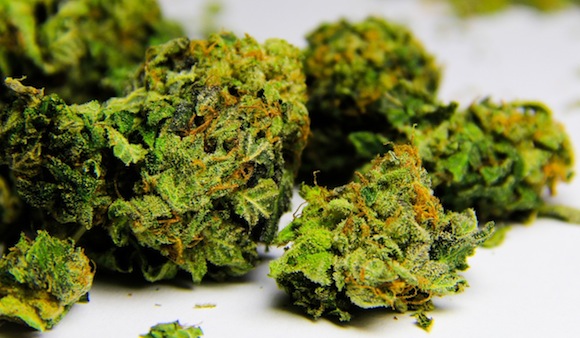
Recommended by The Seeker’s brother.

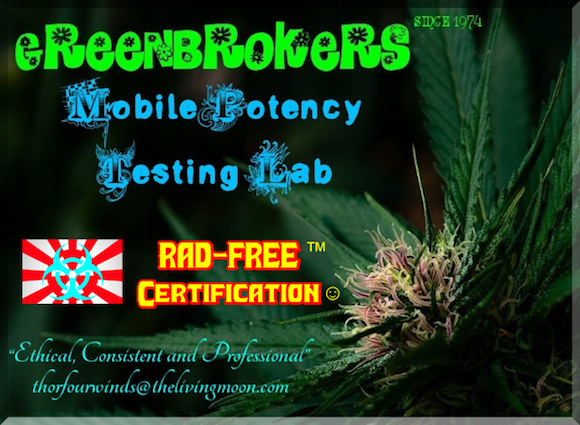

Removing Cannabidiol Oil From the
Controlled Substances Act Will Allow Crucial Access for Patients - Leafly
A major obstacle that states have faced in the fight for medical marijuana has been the Controlled Substances Act, namely that cannabis and all of its related extractions has been categorized as a Schedule I drug. Anything that’s classified as a Schedule I drug means that, according to the federal government, the substance has no medicinal value whatsoever.
Patients who rely on CBD oil to manage their debilitating symptoms and conditions would disagree with that claim.
Fortunately, one important aspect of the new federal medical marijuana bill called the Compassionate Access, Research Expansion and Respect States Act (or the CARERS Act) is the removal of CBD oil from the Controlled Substance Act.
That’s a win in my book.
A major obstacle that states have faced in the fight for medical marijuana has been the Controlled Substances Act, namely that cannabis and all of its related extractions has been categorized as a Schedule I drug. Anything that’s classified as a Schedule I drug means that, according to the federal government, the substance has no medicinal value whatsoever.
Patients who rely on CBD oil to manage their debilitating symptoms and conditions would disagree with that claim.
Fortunately, one important aspect of the new federal medical marijuana bill called the Compassionate Access, Research Expansion and Respect States Act (or the CARERS Act) is the removal of CBD oil from the Controlled Substance Act.
There has been a recent change of heart from some of the more conservative states in the past few years, as we’ve watched Alabama, Florida, Georgia, Kentucky, Iowa, Mississippi, Missouri, North and South Carolinas, Tennessee, Utah, Virginia, and Wisconsin all legalize the limited use of cannabis oils for certain patients, usually those suffering from seizure disorders.
These laws are passed with the best of intentions, as many of the seizure disorders targeted by the legislation are suffered by children. However, as these are often conservative states with little to no background on the ins and outs of legalizing cannabis in any form, these laws are nothing more than words on a page.
Yes, the laws were passed, but they offer no means of access for patients. States have no infrastructure for the production, processing, and manufacturing of cannabis oils, and the laws do not allow for personal cultivation. The only way for a patient to acquire cannabis oil is to travel to a legal state (such as Colorado or Washington) and risk federal prosecution to bring the product back to their home state.
Once they run out? The cycle begins again.
If the CARERS Act is passed, patients will no longer have to break federal laws to acquire their medicine. Not only that, but states will no longer have their hands tied when it comes to providing this medicine.
Removing CBD oil completely from the definition of “marijuana” as it is defined by the U.S. government means that even states without medical marijuana laws could allow access for patients who so desperately need it.
That’s a win in my book.
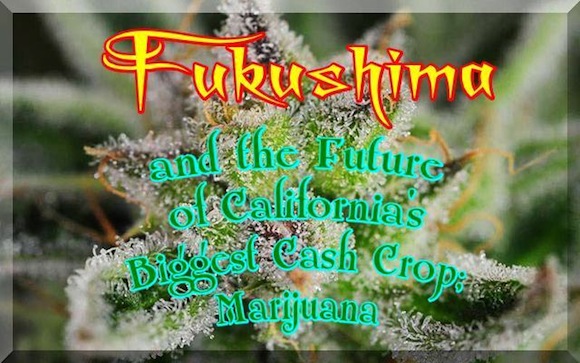
Fukushima and the Future of California's Biggest Cash Crop: Marijuana
Greetings:
Does anyone in authority anywhere tell the truth about Fukushima?
If there is any government or non-government authority in the world that is addressing the disaster at Fukushima openly, directly, honestly, and effectively, it’s not apparent to the outside observer what entity that might be.
There is instead an apparent global conspiracy of authorities of all sorts to deny to the public reliably accurate, comprehensible, independently verifiable (where possible), and comprehensive information about not only the condition of the Fukushima power plant itself and its surrounding communities, but about the unceasing, uncontrolled release of radioactive debris into the air and water, creating a constantly increasing risk of growing harm to the global community.
WTF?

1,465 days. . 4 years, 4 days. . 209 weeks and 2 days. . 35,160 hours. . 2,109,600 minutes. .
Perhaps at no time in human history has it been more crucial to get involved and battle corrupt corporate interests -- the catalysts of our own self-annihilation.
Contaminated soil, undrinkable water, birth defects in both animals and humans: This is what the people of Japan can expect from their inexplicable use of nuclear power -- “inexplicable” in that Japan is the only country to have ever been subjected to uranium’s use as a weapon of mass destruction.
Japanese novelist Haruki Murakami sums it up best: “This time no one dropped a bomb on us .... We set the stage, we committed the crime with our own hands, we are destroying our own lands.”
"What the [url=htanti-nuke movement often misses in its efforts to stop the catastrophic effects of nuclear anything is that it begins with uranium mining -- a process that is horribly dangerous to the earth, the water and the ability of future generations to survive."
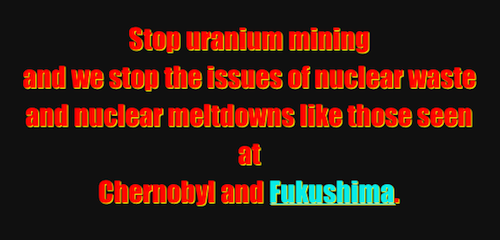
Despite changing claims by corporate scientists and governments, Japan is now experiencing uncontrolled radioactive discharges at the Fukushima Nuclear Power Plant following the events of March 11, 2011. Chernobyl was a picnic compared to what’s happening there.

Fukushima is not Chernobyl, but far worse and clearly much more dangerous, as the spent fuel pools alone held over 600,000 fuel rods. And the danger is not just to the unfortunates living in the area - many of whom will never be able to return to their ancestral homes - but to the entire planet, every organism on our Fragile Planet Earth.
Fukushima Radiating Everyone: 'Unspeakable' Reality 'Will Impact All Of Humanity'
Exposing the "unspeakable" realities of the Japanese catastrophe in this 60 Minutes program, leading nuclear scientist Dr. Michio Kaku said b]radiation from Fukushima will impact of all of humanity.
The nuclear energy power industry violation of the right to health is apparent throughout the new Australian report. "In fact, the whole world will be exposed from the radiation from Fukushima," Dr. Kaku told reporter Liz Hayes.
Fukushima is a three-reactor catastrophe continuing unabated now over 4 (FOUR) years 24/7/365 within 150 miles of a metropolis of 30 million people, Tokyo.
However, despite their significant differences as disasters, Chernobyl and Fukushima are both rated at 7 – a “major accident” on the International Nuclear Event Scale designed in 1990 by the International Atomic Energy Agency (IAEA).


That is the highest rating on the scale, a reflection of the inherent denial that colors most official nuclear thinking. Designed by nuclear “experts” after Chernobyl, the scale can’t imagine a worse accident than Chernobyl which, for all its intensity, was effectively over as an accident in a relatively short period of time.
At Fukushima, by contrast, the initial set of events was less acute than Chernobyl, but overt four years later they continue without any resolution likely soon. Additionally Fukushima has three reactor meltthroughs and thousands of precarious fuel rod assemblies in uncertain pools, any of which could produce a new crisis that would put Fukushima clearly off the scale.
Chernobyl had one reactor, and it didn’t sit on a beach 2,500 feet from the largest body of water on earth. Fukushima involves four reactors, three of which have melted down into the bedrock.
Experts from two Japanese universities have tested the radiation levels and found that the plant, with its 4,400 tons of nuclear fuel rods, “greatly dwarfs the total size of radiation sources at Chernobyl.”
Obviously, the intentional and unintentional release of highly contaminated water from Fukushima’s core into the Pacific Ocean is a wide-open, man-made door to the “process of global radioactive contamination,” says Michel Chossudovsky, the founder of Canada’s Center for Research on Globalization.
Radioactive rainwater has been recorded up and down the West Coast of North America, California in particular. Once contamination reaches any body of water -- especially one as significant as the planet's oceans -- the process of getting into the food chain is a simple one.
Sky high radiation readings across the U.S.
U.S. air radiation surges higher
Special Radiation Station Tests - EnviroReporter.com
How's that for setting the stage? Stay tunaed.
The same goes for cannabis.
North America’s West Coast represents the front lines in the Fukushima “invasion.”
To be continued. . .
The same goes for cannabis.
North America’s West Coast represents
the front lines in the Fukushima “invasion.”
Will we always be able to grow marijuana in California soil with California rain? The same question applies to indoor gardens, since using contaminated water in hydroponic cultivation is no guarantee of safety.

This graphic from Woods Hole in Massachusetts – one of the world’s top ocean science institutions – shows how much more cesium was dumped into the sea off Japan from Fukushima as compared to nuclear testing and Chernobyl:
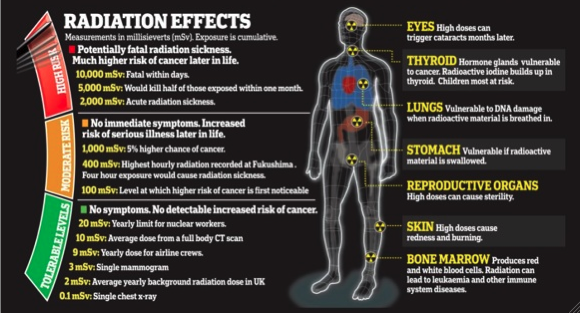
The use of these advanced technologies now directly affects mankind's ability to control its own fate and the lethal consequences on our earthly and human ecosystems are perhaps irreversible.
Or, as another astute individual observed: "As man attempts to become God-like, we release potential forces that can, and probably will, destroy us."
We are slowly but surely losing our extraordinary capacity to make life desirable. As the nuclear fallout continues to spread worldwide, our natural resilience - our immune system - will artificially decrease, independently of our own will. These advanced technologies continue to affect not only our physical bodies, but our minds as well.
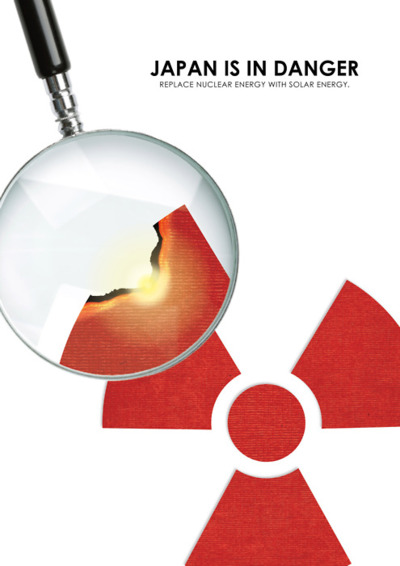
For Chief Looking Horse, the events at Fukushima -- and the generally disastrous treatment of the planet spurred by corporate greed -- is not surprising. At a recent gathering at the United Nations, he put the challenge in stark terms:
“You must decide. You can’t avoid it.


The deadly radiation spewing from the destroyed Fukushima nuclear power plant will continue to do so for thousands of years into the future and the deadly toll it’s having on the environment and humans makes one wonder why, after four years, little or nothing has been done about it, despite what little information to the contrary TEPCO chooses to share with the rest of the world.
Question: Why won’t the Japanese government seek help from the global community wherein assistance may be available instead of all the lies, obfuscation, delays and lack of any plausible rescue plan?
Nothing less than the future of humanity and Planet Earth is at stake here.
Sources for this story:
LA Weekly
High Times Magazine
Global Research
Cannabis Culture
Leafy
Natural News
420 Times
The 4th Media
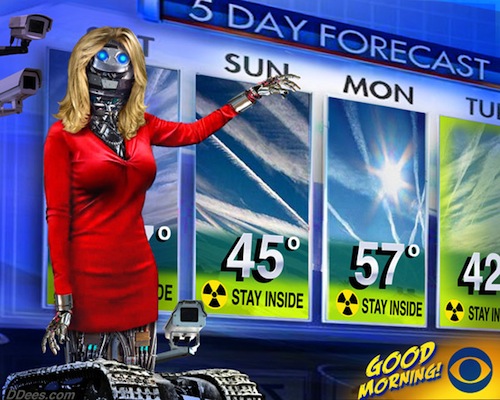
North America’s West Coast represents
the front lines in the Fukushima “invasion.”
Will we always be able to grow marijuana in California soil with California rain? The same question applies to indoor gardens, since using contaminated water in hydroponic cultivation is no guarantee of safety.
As early as 2011, only weeks after the disaster, fish caught off the California coast contained elements of nasty radioactive materials -- and though the test sample wasn’t large, every one of the fish tested was dosed with contaminants.
Interestingly, the tested fish were all born before the disaster, meaning their exposure was limited. One of the study’s experts stated that fish swimming across the Pacific Ocean ever since will have “considerably more radioactivity” and could result in a serious “public health hazard.”
He’s only discussing the present. Imagine 10, 15 or 20 years from now: These doses of alpha-, beta- and gamma-radiation emitters easily set up shop in algae, fish, grass, cattle and -- oh, yeah -- human beings.

This graphic from Woods Hole in Massachusetts – one of the world’s top ocean science institutions – shows how much more cesium was dumped into the sea off Japan from Fukushima as compared to nuclear testing and Chernobyl:

The use of these advanced technologies now directly affects mankind's ability to control its own fate and the lethal consequences on our earthly and human ecosystems are perhaps irreversible.
Or, as another astute individual observed: "As man attempts to become God-like, we release potential forces that can, and probably will, destroy us."
We are slowly but surely losing our extraordinary capacity to make life desirable. As the nuclear fallout continues to spread worldwide, our natural resilience - our immune system - will artificially decrease, independently of our own will. These advanced technologies continue to affect not only our physical bodies, but our minds as well.

Then there’s contamination from the nuclear cloud.
For months now, “steam” has been observed erupting from the top of one of the reactors. Tepco, the corporation most directly responsible for this catastrophe, can’t explain this steam or what it contains.
(Why? Because the company’s crane is malfunctioning!) But recent reports indicate that a wealth of new radioactive materials has been spewed into the atmosphere from Fukushima, spreading globally.
Indigenous peoples around the world have always been on the front lines of environmental disasters.
Indigenous lands are the last ones containing significant untouched concentrations of the most prized resources on earth -- and corporations and governments will do anything to get at them.
"Repeatedly, indigenous leaders have warned that the planet is not a resource for exploitation. Arvol Looking Horse is the 19th-generation pipe carrier of all the bands of the Lakota, Nakota and Dakota nations in North America."
For Chief Looking Horse, the events at Fukushima -- and the generally disastrous treatment of the planet spurred by corporate greed -- is not surprising. At a recent gathering at the United Nations, he put the challenge in stark terms:
“You must decide. You can’t avoid it.


The deadly radiation spewing from the destroyed Fukushima nuclear power plant will continue to do so for thousands of years into the future and the deadly toll it’s having on the environment and humans makes one wonder why, after four years, little or nothing has been done about it, despite what little information to the contrary TEPCO chooses to share with the rest of the world.
Question: Why won’t the Japanese government seek help from the global community wherein assistance may be available instead of all the lies, obfuscation, delays and lack of any plausible rescue plan?
Nothing less than the future of humanity and Planet Earth is at stake here.
Sources for this story:
LA Weekly
High Times Magazine
Global Research
Cannabis Culture
Leafy
Natural News
420 Times
The 4th Media

new topics
-
Dugin's interview and the West's complete ignorance of Russia
New World Order: 53 minutes ago -
Thousands of Anti-Semitic People Protest Israel's government in Tel Aviv
Middle East Issues: 1 hours ago -
Mysterious Spiral 'UFO' Sightings Reported Across US, Europe
Aliens and UFOs: 8 hours ago -
The Dark Pyramid of Alaska and the Why Files take on the subject
Whistle Blowers and Leaked Documents: 11 hours ago
top topics
-
The Dark Pyramid of Alaska and the Why Files take on the subject
Whistle Blowers and Leaked Documents: 11 hours ago, 10 flags -
Mysterious Spiral 'UFO' Sightings Reported Across US, Europe
Aliens and UFOs: 8 hours ago, 2 flags -
Thousands of Anti-Semitic People Protest Israel's government in Tel Aviv
Middle East Issues: 1 hours ago, 2 flags -
Dugin's interview and the West's complete ignorance of Russia
New World Order: 53 minutes ago, 1 flags
active topics
-
Israeli strikes on southern Gaza city of Rafah kill 22, mostly children, as US advances aid package
Middle East Issues • 109 • : LarwtB -
Really Unexplained
Paranormal Studies • 80 • : LarwtB -
Dugin's interview and the West's complete ignorance of Russia
New World Order • 3 • : andy06shake -
Thousands of Anti-Semitic People Protest Israel's government in Tel Aviv
Middle East Issues • 5 • : FlyersFan -
Are you ready for the return of Jesus Christ? Have you been cleansed by His blood?
Religion, Faith, And Theology • 30 • : TheGoodNews -
Zionists of ATS assemble
Political Issues • 165 • : Lazy88 -
The Acronym Game .. Pt.3
General Chit Chat • 7793 • : F2d5thCavv2 -
SEC shuts down Trump Media auditor, BF Borgers, over fraud
Mainstream News • 55 • : Dandandat3 -
Russia Ukraine Update Thread - part 3
World War Three • 5755 • : F2d5thCavv2 -
Shocking moment four men 'try to force Jewish pedestrian into car boot' in North London
Breaking Alternative News • 89 • : FlyersFan

